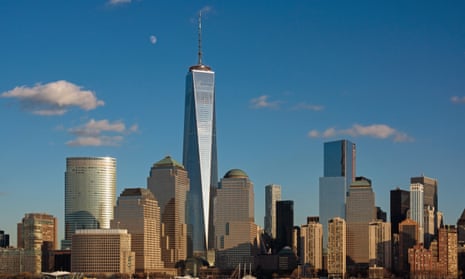As Storm Doris sent 100mph gusts to lash Britain’s extremities, rob old ladies of their hats and throw children’s bikes into canals, it did occasionally find time to play a little tune too. Social media was filled with complaints about whistling buildings; entire office complexes turned into God’s own flutes by the storm. Footage was uploaded to YouTube of a new hospital wing in Torbay humming transcendentally in the wind.
The problem isn’t unique to Doris: it tends to surface every time the weather gets a little windy. No building better represents the keen challenges of whistle-proofing a deliberately silly bit of modern architecture better than Manchester’s Beetham tower. Before it was even complete, the Beetham was whistling so much that sound engineers working on the set of nearby Coronation Street were forced to add extra background noise to outside shots. Construction engineers soon reported that the thin screech was being caused by the vibration of the wind around the angled slats – or louvres – that extend above the building’s top floor. In the intervening years, workmen have scaled the building time and again, but no solution has been found. The building’s architect, Ian Simpson, publicly apologised in 2012. In an echo of JG Ballard’s High Rise, he lived in the penthouse atop the tower, so was apologising to himself as much as anyone. At least Manchester’s piano tuners got something out of it – the note is said to be close to middle C.
As staff at Southampton University’s Institute of Sound and Vibration Research say, solutions to whistling are often unique to the building itself. They consult on finding practical ways of dealing with whistling, putting louvres in wind tunnels and sometimes using scale models of intended buildings to look for what they call “feedback mechanisms in the vortex-shedding process”. In the case of the Cityspire building in Manhattan, the solution found by the building’s owners was to take out every other louvre, smoothing out the wind eddies enough to flatten the note. Built in 1990, the Cityspire initially attracted notoriety in New York after it topped out 11ft higher than its submitted plans. Within months of it opening, an insistent high whine on West 56th Street was waking up residents six blocks away.
But often, modern geometries are too complex to pinpoint the exact cause of the whistling. Sometimes they defy logic altogether, appearing to be almost supernatural. In 2006, as Chicago’s notorious Cabrini-Green housing projects were being razed, they began to hum and groan. As 1 WTC, the successor to the World Trade Center towers, was nearing completion in 2013, it began to emit a sound “like a train passing by”. Urban legends about the souls of 9/11’s victims soon followed. But then, as the final struts stacked into place, the noise went away again.

Comments (…)
Sign in or create your Guardian account to join the discussion